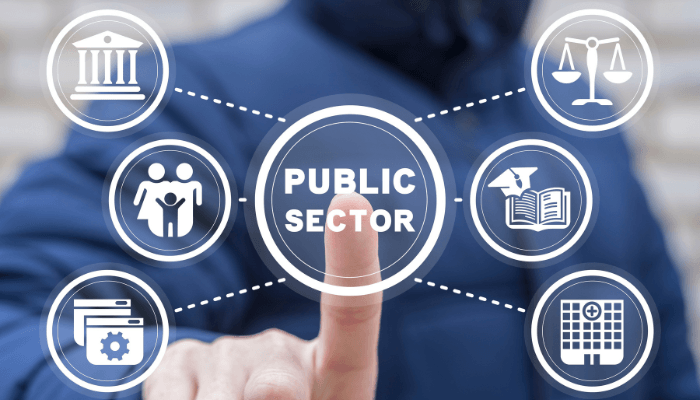

The public sector in Scotland is seeing a marked increase in complaints, with a reported 33% rise in cases received by the Scottish Public Services Ombudsman (SPSO) last year. Rosemary Agnew, the Scottish Public Services Ombudsman, joined us at Holyrood Insight’s Public Sector Complaints Management Conference to discuss these growing challenges and share valuable guidance on enhancing complaint handling within public sector organisations.
In this interview, we discuss some of the pressing questions surrounding effective, fair, and transparent complaint handling practices.
What are the most common challenges public sector organisations face when handling complaints, and how can they overcome them?
Rosemary Agnew: “A lot to answer in one go but let me give you a flavour of one of them! From my perspective, the most common complaints handling challenge is resourcing. Too often, complaints handling is not seen as a priority for competing resources as it is not a ‘front-line’ service; and that is hard to argue with when the choice for decision-makers is, for example, having a nurse on a ward or having them respond to a complaint.
There is no single solution, but the starting point is leadership, and the commitment leaders give—and show—to resourcing complaint handling so it is effective. This enables the organisation to learn and improve, and to build or rebuild relationships with service users. Leaders and managers should also make it clear that providing information to colleagues responding to complaints, without delay, is important.
For complaints handlers, under-resourcing can lead to delays, backlogs, and more work in answering queries and complaints about delay. Be honest and manage expectations from the outset, applying the flexibility that model complaints handling allows. If it is clear at the outset that it will take more than the five (plus five with extension) days at stage 1, escalate to stage 2. If it becomes evident that a response cannot be given in 20 days, keep the complainant informed with a realistic date for when they will receive a response.
It is also worth investing time at the beginning to make sure that you understand the complaint, ideally by speaking with the complainant, as this will reduce the likelihood of something being missed and will help the complainant feel that the organisation is listening.”
What does an effective and fair public sector complaint resolution process look like?
Rosemary Agnew: “Effective means addressing the matter to the satisfaction of both parties, without delay. It should be outcome-focused, identify solutions—and deliver them. Resolution also means identifying learning and improvement actions. This is important, not least because many people who complain to the SPSO say they want the outcome to prevent the same thing from happening to someone else.
Fair means listening to the complainant and ensuring their voice carries weight. Offers to resolve should be fair to the organisation, achievable, and based on objective decision-making. Resolution is a great way to build relationships where they have broken down, but don’t leave it too long; the earlier you try to resolve something, the more likely it is to succeed.
Consistency is achieved through ensuring that your policies and procedures are clear, and that complaints-handling staff are trained and empowered. They should also have access to advice and support. Resolution is about being person-centred and putting them at the heart of the issue. Try to see things from their point of view but maintain balance and judgment—don’t over-promise.
For leaders, I encourage you to reflect on your organisation’s complaints culture. Do you value, welcome, and see complaints as an opportunity to engage and learn, or are you defensive and see complaints as a wall rather than a door? Also, listen to your complaint’s handlers about what they need and what skills training would support them in resolving complaints.
Critically, resolution is not a way to make complaints go away; be sincere and mean what you say. Remember, you don’t have to wait to be asked for a resolution; if you see how to put things right, offer it and deliver on it.”

How can public sector organisations better embed learning and improvement into their complaint-handling processes to drive long-term positive change?
Rosemary Agnew: “I’d say it is not so much the process as what organisations do with the outcome of the process. It’s important that complaints handlers have a learning and improvement perspective, but they are not generally the people who will implement outcomes and learning.
This is where governance and leadership play a part. It starts with the complaints culture. Having a strong and supportive complaints culture, based on robust complaints handling principles that focus on outcomes, is vital. There should be monitoring and reporting mechanisms to ensure that learning identified through complaints is captured, actions are implemented, and their impact is monitored at all levels of the organisation.
How this is done will depend on the size and complexity of the organisation, but the ultimate accountability should lie with senior leaders—executives, boards, councils, and so on. They need to know about complaints and the learning identified to exercise their accountability.
At a more workaday level, it’s also crucial that staff are empowered to implement learning that can be delivered easily and without policy changes or additional resources, without delay.
In terms of the process, make it clear that resolution, actions, and redress are not just about the complainant; they are also about the organisation. Don’t be afraid to build into your process, asking complainants and those delivering the service what they see as key learning points.”
What roles do transparency and accountability play in strengthening public trust through the complaints process, and how can organisations improve in these areas?
Rosemary Agnew: “Transparency and accountability are rooted in honesty and candour.
Begin at the beginning! Do you make it clear and easy for somebody to make a complaint? When responding, if something has gone wrong, be open and honest about it and say what will happen to address the matter. Apologise—an apology is powerful, but it must be honest and sincere and given sooner rather than later.
It is also about being clear about what you can’t do and explaining why. A basic good complaints handling principle is to explain your decision and how you reached it clearly. Be mindful of how you communicate too. The language you use should help the complainant understand the outcome. I have seen excellent examples of good complaints responses and instances where the organisation has also met with the complainant (and their family) to talk through the complaint. I have also seen responses with great content that are so full of jargon and organisational terminology that the honesty of the message is lost.
Remember, complainants often have little choice about accessing your service. People can’t switch their public service provider like they can utilities or banks. Trust, once lost, is hard to regain, and openness through complaints handling is a critical part of relationship re-building.
Honesty is not just about being honest with complainants; it’s also about being honest with staff and ensuring they have support if something has gone wrong, or they have been complained about. Trust in public services relies on trust in those delivering them. If our staff don’t feel trusted and supported, how can the public?
Share what you find and learn. Acknowledging and taking responsibility, and saying what you are doing publicly, shows complainants and staff that you are listening and that they can trust you to put things right as far as possible.”
Rosemary Agnew underscores the critical role that effective, fair, and transparent complaint handling plays in building public trust and accountability. Her advice provides a solid foundation for public sector leaders looking to foster a culture of continuous improvement and genuine engagement with the communities they serve.
At Holyrood Insight, we host a range of dynamic conferences tailored to the needs of local and central government and community leaders. Our events cover pressing topics ensuring that public sector professionals have access to the latest insights, policy updates, and best practices. Designed with government officials, public sector workers, and local representatives in mind, each conference provides actionable guidance and fosters collaboration to address today’s complex governance challenges. Explore our event offerings and find the insights to enhance your impact in the public sector.
Featured








